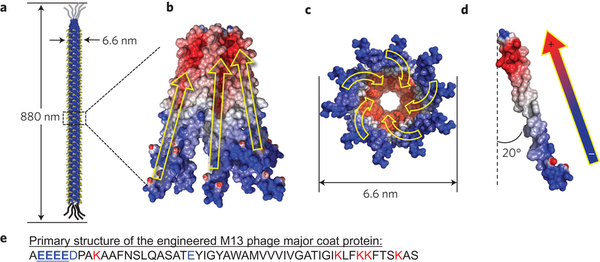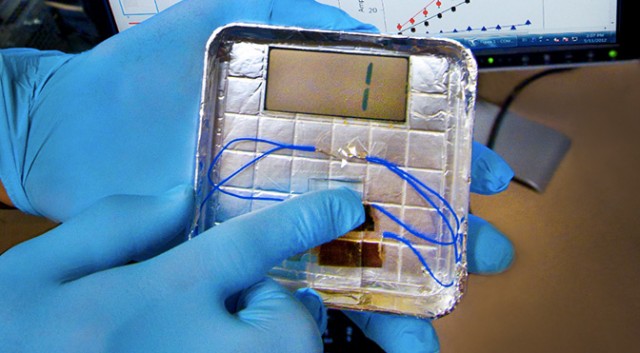M13 synthetic virus converts kinetic energy into electricity

Protein shell of genetically modified variant M13 and its code
Everyone knows the piezoelectric effect - the creation of an electric field under the action of mechanical stress. For example, press the button - and a spark is formed in the piezo lighter. An excellent system, it would seem, piezoelectric elements can be embedded everywhere to collect mechanical energy - in the heels of shoes, a computer keyboard, flooring, door frames and so on - anywhere, because it is practically a perpetual source of "free" energy. But in reality, suitable piezoelectrics are expensive and toxic for general use.
A group of scientists from the National Laboratory. Lawrence in Berkeley found a solution to this problem: they constructed a virus that copes with the task much better than inorganic piezoelectrics, while being safe.
The work began on the basis of the latest scientific discoveries, which discovered the piezoelectric properties of various organic compounds with an ordered cellular structure. For example, bones and collagens from cartilage and tendons turned out to be weak piezoelectrics. Accordingly, it was logical to construct a protein structure, which in theory should exhibit piezoelectric properties. Thus, a genetically modified version of the known virus M13 was created, the protein shell of which is shown in the diagram above.
')
M13 is completely harmless to humans (unlike some inorganic piezoelectrics) - it has long been used in various experiments. It also has a number of key advantages over the inorganic one: it is relatively easy to get a thin film from the bacteriophage M13, which at the same time demonstrates the high strength of the piezoelectric effect. Scientists have proven that electrical properties can be programmed by genetically altering the shape of the virus envelope.
To demonstrate the capabilities of the M13 scientists have designed a piezoelectric generator of 20 layers of film. When you press the buttons, it generates a current of 6 nA and a voltage of 400 mV. This is enough to power the LCD display.

The results are published in the article "Virus-based piezoelectric energy generation" , Nature Nanotechnology journal, May 13, 2012.
Source: https://habr.com/ru/post/143926/
All Articles